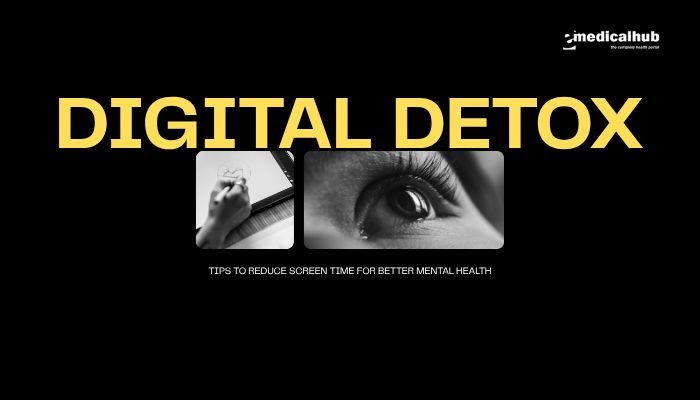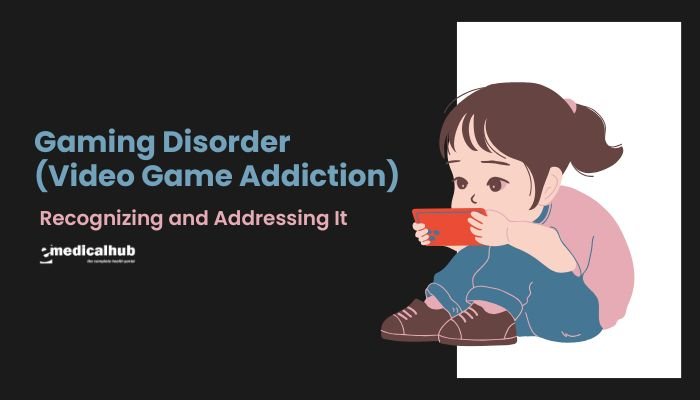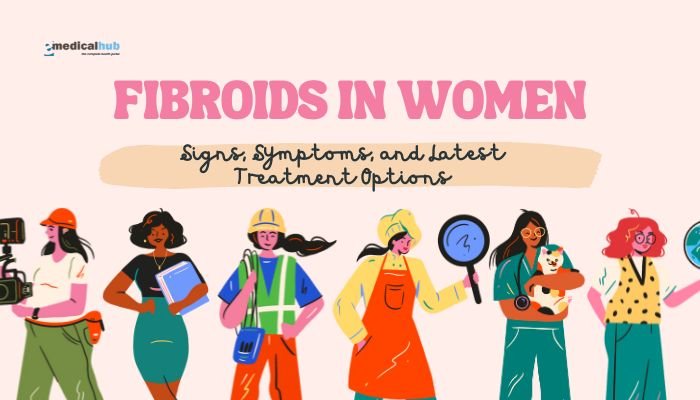Introduction
In today’s society, smartphones, computers, and other digital devices are part of daily life. From remote work to streaming apps, individuals spend countless hours looking at screens. While technology offers convenience, overuse can impact mental health.
Excessive screen time is connected to anxiety, disrupted sleep, low mood, and poor focus. These issues often grow worse over time if left unmanaged.
A digital detox addresses these risks by reducing screen exposure. This concept involves planned breaks or changes in how digital devices are used. Individuals set goals to limit their time online or focus on more purposeful device usage. A digital detox also highlights healthier lifestyle habits such as exercise, offline hobbies, and face-to-face socializing.
This article explores practical steps to limit screen time and protect mental well-being. It covers the reasons behind screen time’s effects on the mind, signs of digital overload, tips for a balanced approach, and ways to develop long-term habits for better mental health.
Understanding Screen Time and Mental Health
The Widespread Use of Digital Devices
• Smartphones: Almost everyone carries a phone capable of internet access and multiple apps. Checking messages, browsing social media, and playing games often become daily habits.
• Computers and Laptops: Remote work, online shopping, and streaming TV shows contribute to long hours at a desk.
• Tablets and E-Readers: Tablets can replace books, magazines, and even function as mini-computers. The portability increases opportunities for prolonged device use.
Effects of Excessive Screen Time on the Mind
• Disrupted Sleep: Blue light from screens influences melatonin production, sometimes delaying sleep onset. Chronic lack of rest can affect mood and energy.
• Reduced Attention Span: Constant scrolling or multitasking can lower the ability to concentrate on tasks that require focus.
• Increased Anxiety: Notifications and alerts keep users in a state of alertness. Over time, worry might rise due to constant connectivity.
• Lower Mood: Repeated exposure to negative news or social media comparisons sometimes links to sadness or low self-esteem.
Digital Overload
• Information Overwhelm: Social media feeds, emails, and group chats can flood people with messages to read.
• Physical Strain: Prolonged device use may lead to eye strain, neck stiffness, or headaches.
• Social Isolation: Although online platforms allow communication, too much screen time can reduce in-person relationships.
Quote: “Our devices bring short-term enjoyment, but we need healthy boundaries to keep long-term well-being.”
Signs It May Be Time for a Digital Detox
Feeling Anxious Without Your Device
• Checking the Phone Constantly: When a phone is not at hand, some individuals experience restlessness or discomfort.
• Panic at Low Battery: Worrying excessively about a device powering down can signal dependency.
Trouble Sleeping or Poor Sleep Quality
• Scrolling Before Bed: Stimulation from screens near bedtime can delay or reduce sleep quality.
• Waking Up Tired: If screen usage disrupts sleep cycles, even long hours in bed may not offer restful sleep.
Reduced Productivity
• Frequent Distractions: Notifications interrupt work or study sessions. Switching tasks repeatedly drains mental energy.
• Procrastination: Mindless scrolling can become a method of avoiding responsibilities.
Negative Emotions After Screen Use
• Social Media Comparison: Constant exposure to curated posts may fuel envy or low self-esteem.
• News Fatigue: Consuming never-ending updates on crises or controversial topics can be emotionally draining.
Neglected Hobbies or Relationships
• Less Time Outdoors: Endless online sessions may replace activities like walking, biking, or gardening.
• Lost Connection with Friends/Family: In-person meetings might decline as digital interactions take over.
Why a Digital Detox Helps
Restoring Focus and Attention
Limiting Evening Screen Time: Reducing exposure to bright displays helps align natural circadian rhythms.
• Enhanced Relaxation: Unplugged nights encourage reading, journaling, or other calming rituals that promote sleep.
• Reduced Comparisons: Spending less time on social media limits feelings of inadequacy.
• Stress Relief: Unplugging lowers mental clutter and helps quiet racing thoughts.
Reconnecting with Offline Life
• Face-to-Face Socializing: Chatting over coffee or attending local events fosters deeper bonds than text messages.
• Physical Activities: More time for workouts, sports, or relaxing walks can enhance overall fitness.
Restoring Sleep Patterns
• Limiting Evening Screen Time: Reducing exposure to bright displays helps align natural circadian rhythms.
• Enhanced Relaxation: Unplugged nights encourage reading, journaling, or other calming rituals that promote sleep.
Preparing for a Digital Detox
Setting Clear Goals
• Identify Areas of Improvement: Understand the biggest challenges—late-night scrolling, chat notifications, or game apps.
• Choose a Timeframe: Some prefer short breaks (a weekend detox), while others opt for longer commitments (one month or more).
• Track Baseline Habits: Apps or built-in phone settings can measure current usage, offering a starting reference.
Communicating Your Plan
• Inform Family and Friends: Let people know you’ll respond less frequently to texts or social media. This reduces misunderstandings.
• Workplace Arrangements: If necessary, give colleagues a heads-up about reduced availability outside office hours.
Gathering Alternatives
• Offline Activities: Prepare books, puzzles, or sports gear to fill time normally spent on devices.
• Non-Digital Tools: Use a physical notebook for lists or a paper calendar for scheduling.
Creating a Support System
• Accountability Partners: A friend or relative can join the detox or check in regularly.
• Virtual Groups: Ironically, online communities dedicated to reducing screen time might offer motivation (if used in moderation).
Digital Detox Strategies
Strategy One: Gradual Reduction
• Step-by-Step Decrease: Instead of a sudden cutoff, limit usage by 15–30 minutes daily or reduce certain apps first.
• Schedule Screen Time: Use a timer or phone settings that lock apps after a set duration.
• Progressive Gains: This method allows adjustment without a severe sense of withdrawal.
Strategy Two: Time Blocks
• Focused Work Periods: Dedicate blocks of time (e.g., 25 to 60 minutes) to work or a specific task without checking any device.
• Breaks for Checking: After a work block, allow a short window to handle messages or urgent updates.
• Pomodoro Method Variation: Many adopt this approach to stay productive while staying informed.
Strategy Three: Dedicated No-Screen Zones or Hours
• Bedrooms: Keep devices out of reach at night or store them in another room.
• Mealtime Bans: Avoid placing phones on the table during family dinners.
• Weekend “Disconnect”: Choose a half-day or full day each weekend to switch off the phone or tablet.
Strategy Four: Replacing Digital with Physical
• Printed Magazines/Newspapers: If you love news, read a print version.
• E-Reader vs. Physical Book: A real book removes notifications and helps reduce screen exposure.
• Paper Planners: Returning to pen and paper for schedules might help structure the day better.
Strategy Five: App and Platform Limits
• Uninstalling Addictive Apps: If a social media platform or game consumes hours, uninstalling can offer immediate relief.
• App Timers and Site Blockers: Browser extensions or phone settings can block specific websites during set hours.
• Notification Controls: Turn off unneeded alerts so the device stays silent, reducing temptation to pick it up.
Strategy Six: Mindful Usage
• Define Purpose: Each time you unlock your phone, be aware of your goal: checking email for 5 minutes, reading an article, etc.
• “Am I Doing This Intentionally?”: A quick mental question that stops unconscious scrolling.
• Logging Time Spent: Jot down every digital session to see patterns and hold yourself accountable.
Replacing Screen Time with Healthier Activities
Outdoor Exercises and Sports
• Nature Walks: Explore local parks or trails to boost physical fitness and mood.
• Team Sports: Join groups or clubs to stay active and socialize face-to-face.
• Gardening: Regular tending to plants can be a satisfying, device-free pastime.
Creative Outlets
• Painting or Drawing: Artistic expression can act as stress relief.
• DIY Projects: Build furniture, repair household items, or try crafts.
• Music and Dance: Learning an instrument or attending dance classes offers joy outside digital screens.
Social Gatherings
• Game Nights: Invite friends over for board games or cards.
• Community Activities: Find local events like cultural festivals, volunteer programs, or workshops.
• Cook Together: Prepare meals with family or friends, fostering meaningful interaction.
Mindfulness and Relaxation
• Meditation and Yoga: These practices encourage calmness and body awareness.
• Journaling: Write about daily experiences or keep a gratitude list.
• Guided Relaxation: If an app is needed, use it briefly, then put the device aside afterward.
Personal Growth
• Continuing Education: Learn a language, take a course, or read about new topics.
• Fitness Challenges: Set physical health goals such as a monthly step challenge or running distance.
• Offline Hobbies: Revisit old interests like stamp collecting, photography (with a camera), or crocheting.
Balancing Online Work Demands
Setting Boundaries at Work
• Firm Work Hours: Avoid responding to emails or chats after a set time each evening.
• Offline Lunch Breaks: Use meal breaks to step away from screens, allowing eyes and mind to rest.
• Clarify Expectations: If possible, discuss with your manager about offline availability outside work hours.
Ergonomic Breaks
• Use Short Pauses: Every 20–30 minutes, look away from the screen to rest your eyes.
• Stretch Exercises: Simple movements for the neck, shoulders, and wrists can relieve tension.
Digital Tools for Efficiency
• Task Management Apps: If online tools are needed, pick ones that streamline tasks instead of promoting distraction.
• Email Filters: Limit your inbox to high-priority messages, reducing the time spent reading unnecessary messages.
WFH (Work From Home) Tips
• Separate Work and Personal Spaces: If possible, create a dedicated work area and avoid using that spot for leisure.
• End-of-Day Ritual: At quitting time, log out of work accounts and silence work-related notifications.
Overcoming Challenges and Relapses
Dealing with Boredom
• Planned Activities: Keep a list of offline tasks or hobbies so you have an immediate option when boredom strikes.
• Mindful Reflection: Ask whether boredom truly needs digital relief, or if it’s an opportunity to learn self-soothing without screens.
Handling Peer Pressure
• Social Circles: Some friends might rely heavily on group chats or online gaming. Communicate your goals or find offline meetups.
• Family Patterns: Encourage shared screen-free time at home. Propose alternatives like board games or a cooking session.
Avoiding “All-or-Nothing” Thinking
• Recognize Partial Wins: If you reduce social media from 3 hours daily to 1 hour, it’s an improvement.
• Adapt Strategy Over Time: Life changes (new job, family issues) may require adjusting your approach to digital detox.
Setting Realistic Expectations
• Celebrate Progress: Whether you cut out one app or stopped using your phone after 9 PM, each step counts.
• Accept Occasional Mistakes: Slipping back into old habits can happen, but return to your plan.
Long-Term Maintenance of Healthier Digital Habits
• Outline Essential vs. Non-Essential Use: For example, you might need your phone for work calls or navigation, but not for random videos.
• Update the Code Over Time: Reassess your technology usage every few months.
Setting Digital-Free Times
• Regular Breaks: Schedule short device-free periods daily, plus more extended breaks weekly or monthly.
• Vacation Policies: Consider phone-free weekends or limit daily screen time while on vacation.
Monitoring Progress
• Usage Tracking Apps: Keep an eye on your stats, but avoid obsessing. The goal is awareness and balance.
• Reviewing Mood and Energy: Notice improvements in mental clarity, relationships, or sleep quality.
Promoting Digital Literacy
• Educate Family Members: Teach children and teenagers about healthy tech boundaries.
• Encourage Mindful Online Behavior: Show that digital tools can be beneficial when used with purpose, rather than mindlessly.
Impact on Mental Health and Well-Being
Improved Mood and Lower Stress
• Breaking Negative Loops: Less exposure to stressful content leads to calmer emotions.
• Self-Esteem: Reduced social comparisons promote a more balanced self-view.
Boosted Concentration and Creativity
• Focused Work Sessions: Allow the brain to enter a deep work state, often leading to better output.
• Discovery of Passions: With extra time, you can rediscover old interests or new creative outlets.
Enhanced Relationships and Communication
• Face-to-Face Interactions: Physical meetings build stronger emotional connections than texting or video calls alone.
• Shared Activities: Group exercise, art classes, or simply talking can deepen social bonds.
Better Sleep and Physical Health
• Consistent Bedtime: Without late-night scrolling, winding down is easier.
• Morning Energy: Restful nights translate to improved morning alertness and mood.
Quote: “When the smartphone is out of sight, it lets the mind find its own pace.”
Common Myths About Digital Detox
Myth: “You Must Eliminate All Devices Entirely.”
Reality: Technology is often essential for work or daily life. Moderation, not total elimination, is the more practical goal for most people.
Myth: “A Digital Detox Is Only for Young People.”
Reality: All age groups can face screen overuse. Digital balance is relevant whether you are 15 or 75.
Myth: “Any Screen Time Is Bad.”
Reality: Some usage is beneficial for learning, connecting with loved ones, or relaxation. The problem arises when overuse affects health.
Myth: “It’s Impossible to Disconnect Fully.”
Reality: While society relies on digital platforms, small changes—like device-free meals or nights—are feasible for many.
Cultural and Social Factors
Work Expectations
• 24/7 Availability Norm: Certain industries expect rapid replies, making it harder to log off.
• Cultural Differences: Some regions have stronger boundaries around personal time, while others treat after-hours contact as routine.
Social Media Pressure
• Fear of Missing Out (FOMO): Trends, memes, and viral content shift quickly online, enticing constant checking.
• Social Norms: People can feel obligated to respond to messages or keep up with group chats.
The Rise of Virtual Events
• Online Seminars and Conferences: Since many gatherings have gone virtual, screen time may rise for professional development.
• Hybrid Environments: Even when events are in-person, digital engagement (live polling, event apps) might extend screen usage.
Support and Counseling
Talking to a Therapist
• Identifying Underlying Causes: Digital dependency sometimes masks anxiety, stress, or other personal issues.
• Cognitive Behavioral Techniques: A counselor can introduce methods for reframing thoughts and building positive habits.
Digital Detox Retreats
• Organized Programs: Some facilities or groups offer short-term getaways where phone and internet use is restricted.
• Peer Support: Being around others on a similar journey can enhance motivation.
Online Resources for Change
• Time-Management Applications: While paradoxical, certain apps encourage mindful behavior by limiting other apps or providing focus tools.
• Virtual Communities: Accountability groups can share tips, but it’s vital to monitor screen time while using them.
Children and Screen Use
Setting Examples at Home
• Parental Screen Habits: Children mimic adult behaviors. When adults engage offline, children are more likely to do the same.
• Family Activities: Encourage outdoor games or shared reading to show fun beyond digital devices.
Screen Time Guidelines
• Age-Based Limits: Experts often suggest limiting young children’s daily screen exposure.
• Educational Content: If a screen is used, focus on enriching programs rather than mindless cartoons or games.
Teaching Digital Safety
• Online Boundaries: Children need to learn about privacy, cyberbullying, and the difference between beneficial and harmful websites.
• Positive Internet Use: Introduce them to creative or educational platforms rather than random browsing.
Workplace Initiatives for Reducing Screen Time
Encouraging Healthy Breaks
• Scheduled Pause Reminders: Automatic pop-ups on corporate systems can prompt a short walk or stretch.
• No-Meeting Blocks: Some companies designate certain hours for uninterrupted work, reducing digital overload.
Mindful Communication Policies
• Fewer Emails and CCs: Teams can decide on limiting “Reply All” or adopting concise messaging.
• Collaboration Tools: Use one platform for group tasks rather than spread communication across multiple channels.
Company Wellness Programs
• Digital Detox Challenges: Competitions or recognition for employees who lower screen time outside work.
• Workshops: Invite mental health experts to speak about balancing productivity and device usage.
Creating Sustainable Lifestyle Shifts
Building New Habits Gradually
• Start Small: Instead of aiming for drastic changes, reduce screen time in a single area (like social media) first.
• Consistency: Even 10-minute daily walks device-free can build momentum.
Reviewing Progress Periodically
• Monthly Check-Ins: Assess how you feel physically and mentally. Adjust your strategies if you’re slipping back.
• Reward Systems: Treat yourself when you achieve a milestone, such as a week of device-free evenings.
Involving Friends or Family
• Group Goals: A collective approach motivates everyone. For instance, a group chat can become a short “check-in” instead of continuous chat throughout the day.
• Shared Activities: Replace screen-based gatherings with hiking, museum visits, or cooking together.
Flexible Mindset
• Adaptations: As personal or professional circumstances change, reevaluate your digital detox plan.
• Acceptance of Imperfections: There might be times when screen use spikes. Acknowledge this without abandoning the entire strategy.
Monitoring the Benefits
Improved Emotional State
• Mood Journaling: Note if mood swings have lessened, or if overall positivity has increased.
• Stress Levels: Check if worry or frustration has decreased since your detox began.
Better Relationships
• Communication Quality: Do family or friends notice an improvement in how you connect during in-person discussions?
• Openness: With less screen distraction, you might find it easier to be fully present with loved ones.
Enhanced Productivity
• Work Efficiency: Tasks may take less time, with fewer digital interruptions.
• Creative Output: Freed mental space can enhance original thinking, problem-solving, or artistic expression.
Physical Upgrades
• More Energy: Some experience improved energy from better sleep habits and more offline physical activities.
• Eye Comfort: Less dryness or eye strain if screen hours are significantly cut down.
Quote: “When we step away from screens, we step toward our own peace of mind.”
Common Pitfalls and How to Avoid Them
Temporary “Crash” Method
• Drastic Cuts: Quitting all social media and streaming services in one go can backfire if unprepared.
• Alternative: Go step by step or limit usage times, giving the mind room to adapt.
Overreliance on Other Screen Types
• Switching to TV Bingeing: Some attempt a phone detox but spend hours watching TV or browsing on a laptop.
• Balanced Screen Use: The aim is holistic reduction, not just shifting from one device to another.
Neglecting Basic Tools
• Alarms and Reminders: Busy schedules need some digital management. Avoid removing all helpful apps that keep you organized.
• Regular Check: If a tool genuinely helps, keep it but avoid letting it become a time sink.
Making the Detox a Burden
• Overly Strict Rules: Excessively rigid plans might trigger frustration or rebellion.
• Gentle Approach: Choose guidelines that support freedom and mental wellness.
Digital Detox in a Social Media-Driven World
Targeted Unfollowing and Unfriending
• Curate Feeds: Remove accounts that spread negativity or constant advertisements.
• Quality vs. Quantity: Keep connections that bring genuine value or personal closeness.
Periodic Social Media Breaks
• Deactivation: Some platforms allow temporary account deactivation. This gives a defined break.
• App-Free Device: If you want partial breaks, remove the app from your phone but access via desktop for limited times.
Mindful Scrolling Techniques
• Set a Purpose: Clarify why you’re logging on (e.g., to check specific updates).
• Time Tracking: Use an alarm to prevent hour-long scroll sessions.
Cultural Shifts Toward Digital Wellness
Growing Awareness
• Mainstream Discussions: Digital detox practices appear in the media, indicating more people notice mental strain from screens.
• App Developers Changing Tactics: Some platforms promote healthier usage with built-in reminders or daily usage caps.
Influence of Tech Companies
• Built-In Screen Time Tools: Many phone operating systems now have usage reports and lockout features.
• Extended Reality: Virtual reality systems may also need guidelines to avoid immersion that turns excessive.
Education Systems
• Digital Literacy in Schools: Lessons can teach children about balanced device use and mental well-being.
• Screen-Free Homework: Some educators encourage projects that require offline research to reduce internet dependence.
Conclusion
A digital detox involves the conscious reduction of screen time and the promotion of mindful technology use. It is not about eliminating devices entirely—modern life frequently relies on them. Instead, the goal is to recognize patterns of overuse or emotional discomfort tied to constant connectivity.
By applying techniques such as no-screen zones, time blocks, and mindful usage strategies, people can reduce stress, restore focus, and enhance relationships.Replacing digital habits with offline hobbies, face-to-face interactions, and physical activities brings additional benefits. Overcoming challenges like boredom, peer pressure, and daily demands may require steady effort, but many users find the payoff rewarding.
They experience better sleep, greater mental clarity, improved mood, and deeper personal connections.A successful digital detox depends on realistic goals and consistent reflection. By using built-in screen-tracking tools, scheduling device-free time, and educating others about healthier technology habits, individuals build a more balanced lifestyle.
Over time, these steps create lasting change. A person who once felt tethered to their phone can learn to reclaim control, experience calm, and enjoy life beyond the screen.
References
- Anderson M, Jiang J. Teens, social media & technology. Pew Research Center. 2018.
- Twenge JM, Campbell WK. Associations between screen time and lower psychological well-being among children and adolescents. Prev Med Rep. 2018;12:271-283.
- Przybylski AK, Weinstein N. Digital screen time limits and young children’s psychological well-being: Evidence from a population-based study. Child Dev. 2019;90(1):e56-e65.
- Van der Schuur WA, Baumgartner SE, Sumter SR. Social media use, social media stress, and sleep: Examining cross-sectional and reciprocal relationships in adolescents. Health Commun. 2019;34(5):552-559.
- Exelmans L, Van den Bulck J. Bedtime mobile phone use and sleep in adults. Soc Sci Med. 2016;148:93-101.
- Lin LY, Sidani JE, Shensa A, et al. Association between social media use and depression among U.S. young adults. Depress Anxiety. 2016;33(4):323-331.
- Alhassan AA, et al. Problematic Internet use and its relation to anxiety: A systematic review. Curr Psychol. 2020;39:1872-1886.
- Smith A, Anderson M. Social media use in 2018. Pew Research Center. 2018.
- Boers E, Afzali MH, Newton N, Conrod P. Association of screen time and depression in adolescence. JAMA Pediatr. 2019;173(9):853-859.
- Weaver KE, Mays D, Weaver TE, et al. Using eHealth to expand access to cognitive behavioral therapy for insomnia. Psychiatr Serv. 2021;72(4):437-440.
- Walker MP. The role of sleep in cognition and emotion. Ann N Y Acad Sci. 2009;1156:168-197.
- Przybylski AK. Digital environments, well-being, and mental health. Child Dev Perspect. 2019;13(3):140-145.




